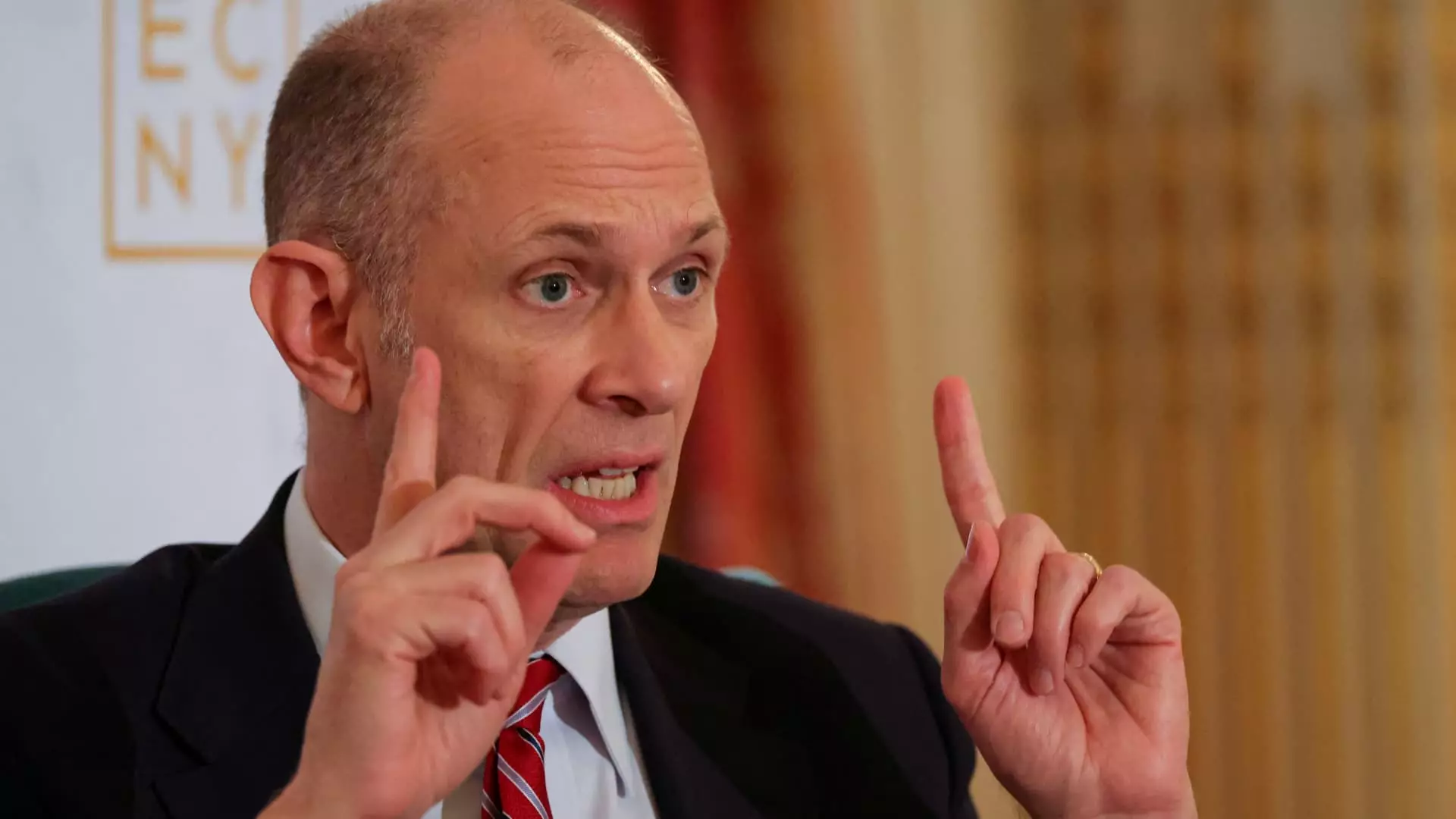In an alarming turn of events, the economic landscape is being overshadowed by President Donald Trump’s aggressive trade policies, with recent threats of escalating tariffs creating a ripple effect across the financial markets. Chicago Federal Reserve President Austan Goolsbee recently highlighted the complications that these tariff threats introduce into monetary policy, leading to uncertainty regarding interest rate adjustments. This unsettling scenario is reminiscent of how turbulent trade discussions can destabilize not just markets, but the broader economy itself, stirring apprehension among economic stakeholders.
It’s hard to comprehend how the very foundation of our economic growth—innovation and trust—is being jeopardized by a series of impulsive tariff announcements. Goolsbee’s commentary reflects a genuine concern: the potential for stagflation looms large, and the implications for employment and inflation could be dire. In an era where economic growth should be nurtured through collaborative global trade, Trump’s divisive approach seems designed more for short-term political gain than for long-term economic prosperity. The stakes are far too high; trade policy must favor stability over volatility.
A Central Bank in a Bind
The Federal Reserve, traditionally a body that shields itself from political influences, finds itself navigating treacherous waters as it evaluates the impact of these trade policies on the economy. Goolsbee emphasizes a cautious approach, declaring that any action concerning interest rates is contingent on a clearer understanding of the tariffs’ economic fallout. This cautious mentality isn’t merely prudent; it’s essential in times of uncertainty. Yet, it starkly contrasts with the overwhelming sense of urgency that Trump’s tactics inspire.
The expectation of interest rate cuts in the coming months—despite Trump’s recent tariff maneuvers—illustrates a disconnect between fiscal policy and reality. The Fed’s reluctance to react immediately signals an acknowledgement of limits in their influence, leaving markets clinging to any semblance of predictability. The choice they face is troubling; do they take action against potentially harmful tariff outcomes, or do they hold their ground in hopes that clarity will prevail? This dilemma encapsulates the broader crisis of confidence facing economic forecasters today.
The Market’s Jittery Response
Aside from its macroeconomic implications, Trump’s trade policy has injected a level of volatility into financial markets that is hard to ignore. As fears over rising costs mount, the potential for inflation undermines consumer purchasing power, creating the very environment that Goolsbee and others regard as untenable. The anxiety reverberates throughout various sectors, with companies like Apple becoming unwitting focal points in this ongoing tension. Such incidents illuminate how interconnected our global economy has become; one tariff threat can ripple across industries, altering pricing strategies and consumer behavior in real time.
Moreover, the prospect of increased tariffs on products like iPhones raises legitimate concerns about how much consumers can bear. The initial impact might appear minor in the grand scheme, but this is a classic case of the proverbial straw that could break the camel’s back. Goolsbee’s assertion that the market must prepare for “stagflationary impacts” warns of the looming dangers nestled within these trade policies, and this reverberates strongly with those who remember the volatility of the 1970s.
Hope Amidst the Uncertainty
Despite the whirlwind of uncertainty, Goolsbee maintains a glimmer of hope for the economy’s long-term trajectory. The sentiment is encouraging, yet it raises eyebrows; can we realistically expect to emerge unscathed from these turbulent times? His projections for interest rates to potentially stabilize or even decrease are comforting, but they tread precariously close to wishful thinking, considering the current geopolitical climate.
As we delve deeper into this situation, we must ask ourselves: at what cost will stability come? The conversation cannot merely center around economic projections but must reflect the social fabric that these policies affect. The failure to recognize the human consequences of economic decisions—like stagnant wages, rising costs, and dwindling job security—raises ethical questions about leadership. Economic theory may point toward growth, but if it comes at the expense of the average American worker, what does that truly signify?
In the end, as President Trump continues to wield tariffs like a blunt instrument, one must wonder how many more shocks the economy can withstand before the hope for stability fades into despair. It’s vital that policymakers understand that strategic trade policies, rather than reckless tariffs, are not just beneficial but necessary for forging a more harmonious economic future.


Leave a Reply